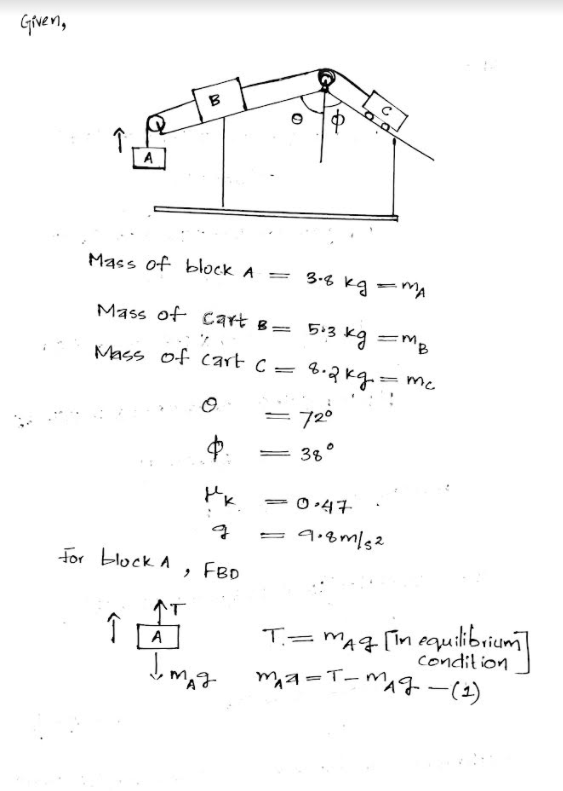This question refers to the situation in Figure 2, above. The mass of block A is 3.8 kg. The mass of cart Bis 5.3 kg. The mass of cart C is 8.2 kg. The plane under block B is inclined at an angle theta - 0 = 72 degrees away from vertical. The plane under cart C is inclined at an angle phi = p = 38 away from vertical. The coefficient of kinetic friction between block B and the plane beneath it is 0.47. The blocks are all moving. The velocity of Block A points downward, and none of the strings stretch. Assume the only significant forces in this situation are tension forces, normal forces, friction only between
To be clear: You must write the words "Newton's Second Law" and point to an example of it within your solution! Write out the second law using symbols, not numbers. Writing "net force = m a" does not qualify because that could be written for any object. The symbols and subscripts should clearly refer to specific forces in each diagram. Examples, good and bad, of what might qualify are shown below.
The following are three examples of Newton's second law written for an object called "E" (which is not in this question). Credit would be given for the first example but not for the second or third.
-
- This is a good example: mE g−TEJ sinθ1+NER cosθ2=mE a
- This is a bad example that is not specific enough: Σ FE=mE a
- This is a bad example with unspecified numbers and without symbols: (1.7 kg) g−(3.8 N) sin(59∘)+(4.9 N)cos(34∘)=(1.7 kg) a
Once you have begun your solution with symbols in Newton's Second Law, you may begin to substitute numbers as needed.



Step by step
Solved in 4 steps with 4 images
